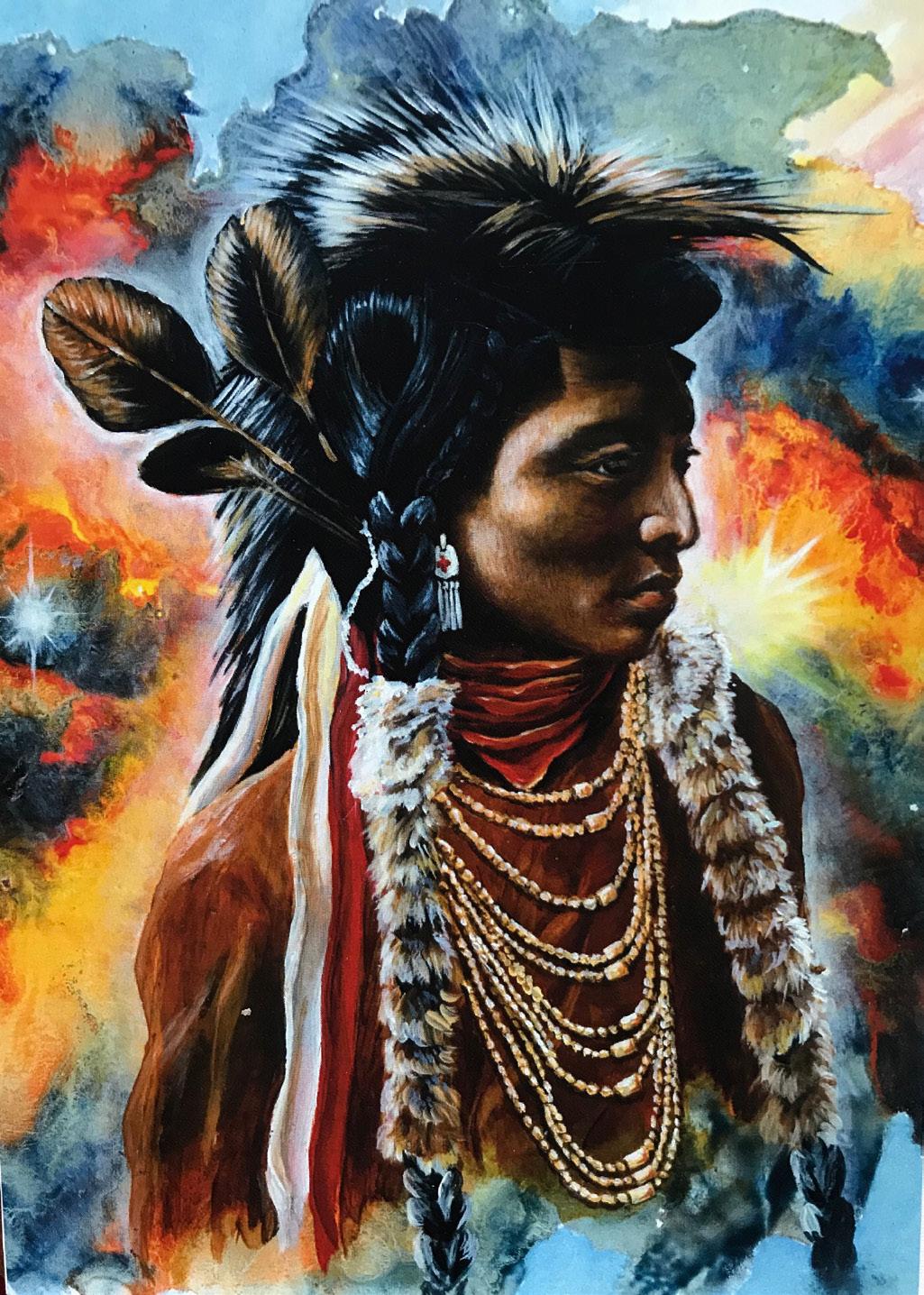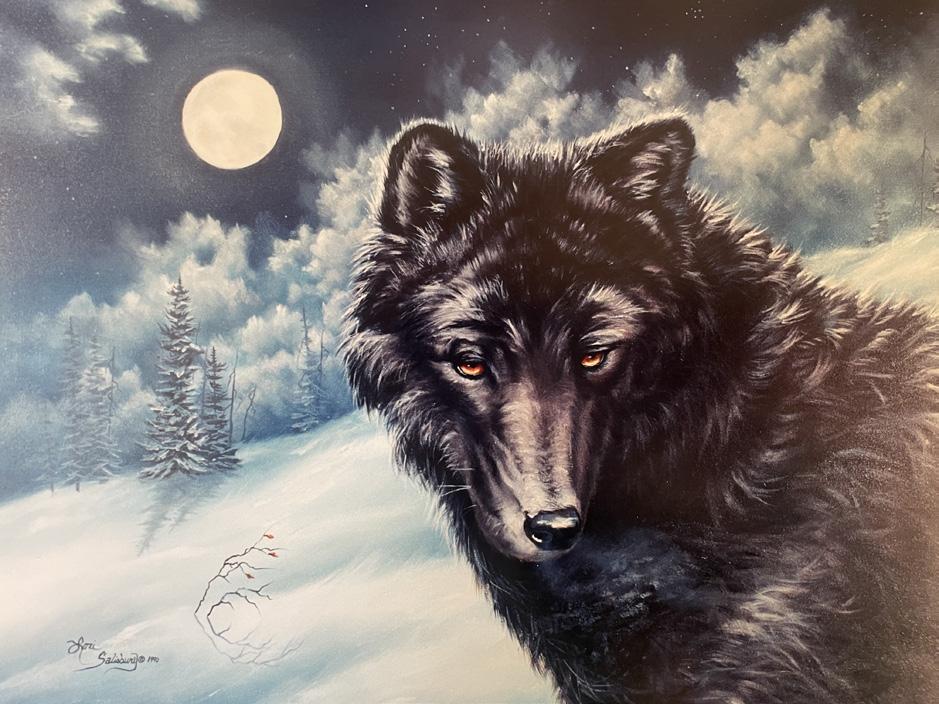
3 minute read
her unique EXPRESSION is full of STORY
But then she adds, “Funny, the weather affects me. I get motivated by weather, the full moon, the drama found on stormy nights and sometimes days. If it’s sunny and warm, I just want to walk and be in the mountains and play in the sun. Good weather is less motivating for me than the drama of storms and night skies.”
One of her paintings is that of a baby bear. She describes it as “a happy little bear watching the butterfly, titled Heaven on Earth. It’s a three-part series. “I like to take what I’ve done in some of my paintings and bring them into the 3-dimensional reality of sculptured portrayal, featuring Geronimo, the Baby Bear and the Butterfly.”
In her yard, the three paintings that make the story of Heaven on Earth are replicated in a large 3-dimensional sculpture.
“Adding sculptures of some of these paintings became a curious method for marketing, as it brought, of course, a much higher dollar to the sale of a specific story painting,” she added.
Her incredible painting of the Native American warrior came from an old black and white photo. She brought him to life in the bright red colors and blacks that make him truly stand out. The Native from the Cosmos, she saw him first in her imagination. Lori lived in Montana during that time and was drawn to the Crow Indian Reservation and its people, where she came across that old photo.
“When I asked where his people came from, he pointed up and said, “We are Pleiadeans, a people from the stars.”
Thus, a fine arts painting of the Indian brave was born from a personal experience.
This is an example of the “Creative Verve,” the title I’ve given this article. It is the immediate, almost wild intuitive response to a treasured moment of experience, where an artist sees beyond his or herself into a vision that manifests a far more complete and lasting expression of a perceived reality. It is the animated spirit of an interaction that manifests into a lasting image where doubt does not exist. It is Creative Verve that ignites a painting, that brings into the imagination a vision that first must come forth, and second, be put to canvas, and perhaps stretched into a 3D sculpture in clay before being solidified in time by casting it to bronze, thereby preserving a moment of realization for many generations to ponder.
“The paintings are like my children; I don’t want to give them up,” she admits, “but I know they also have their own journey, like that old photo, which came to life for me.”
In my mind, as the writer of this interview, a master artist of uniquely painted stories like Lori Salisbury justifiably commands a high price for her work, not only because some of it does take years to accomplish, but also because her unique expression is full of story in many samples. Like a star athlete, she deserves what she’s achieved.
Lori’s engaging exploration of art, and its means to life, is a story of a very fine artist who started uncommonly young, thanks to the influence and encouragement of “Gramma Carlson,” her most influential mentor. Lori’s life should be a movie of a woman who overcame many obstacles found along the way, overcoming by holding on with a fierce focus, like a Crow warrior, like a Pleiadean, regarding the purpose of her journey: that being primarily to help others become aware of the precious state of our natural world. To this, Lori Salisbury has blossomed into a storyteller whose canvases have established a lasting effect toward the preservation of our natural world, helping people realize the living reality that exists all around an otherwise often indifferent humanity.

“We all have a responsibility to our children, and all generations that might follow, to preserve what is wild and free. Let the artists of the world paint their visions out among the stars. We are like the Pleiadeans; I feel sometimes I am from the stars also. We are stewards, and the works of our art emanated from our hearts.”
Artists like Lori Salisbury have a very real purpose for the world; they awaken us to things we never thought about. They are born for it. We should laud them, listen to their stories, analyze their impressions and think about their statements. And we should support them as well.

We are stewards, after all.











